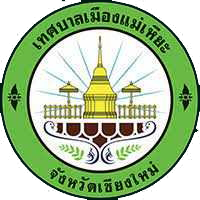Articles
บทความแม่เหียะเมืองนันทนการสีเขียว

มุมคิดจาก ธนิต ชุมแสง นายกสมาคมร้านอาหารและสถานบันเทิงเชียงใหม่ และ ประธานกรรมการธิการสถาปนิกผังเมืองล้านนา

Q : ในบทบาทของนายกสมาคมร้านอาหารและสถาบันเทิงเชียงใหม่ มองเห็นศักยภาพของเมืองแม่เหียะในมิติการเป็นเมืองนันทนาการอย่างไร
“เรื่องแรกที่ต้องคิดก่อนเลย เมื่อจะทำร้านอาหารคือกลุ่มลูกค้า ถ้าย้อนกลับไปซัก 10 ปี เมืองแม่เหียะยังไม่มีร้านอาหารขนาดใหญ่ และพื้นที่แถวนี้ก็มีแหล่งท่องเที่ยวที่เป็นหน้าเป็นตาของเมืองเชียงใหม่ ไม่ว่าจะเป็นเชียงใหม่ไนท์ซาฟารี และอุทยานหลวงราชพฤกษ์ ส่วนตัวผมจึงคิดว่า เมืองแม่เหียะเป็นทำเลที่เหมาะเจาะที่จะทำร้านอาหาร ขนาดสัก 1,000 ที่นั่ง และมีจอดรถ 300 – 400 คัน มีการจัดภูมิทัศน์ให้สวยงาม เปิดให้เห็นวิวดอยสวยๆ ยามเย็น ตอนนั้นแม่เหียะยังมีพื้นที่โล่งอยู่มาก ผมกับหุ้นส่วนจึงคิดและตัดสินใจลงทุนธุรกิจที่นี่
หากพิจารณาเรื่องการเติบโตของเมืองเชียงใหม่ เราจะเห็นว่ามีการเติบโตอย่างต่อเนื่องทางด้านทิศใต้ของเมือง มีโครงการที่อยู่อาศัยใหม่ๆ เกิดขึ้นจำนวนมาก รวมถึงร้านสรรพสินค้าขนาดใหญ่เกิดขึ้นหลายแห่ง การพัฒนาของพื้นที่แม่เหียะเป็นไปในรูปแบบนี้ ประกอบกับการมีที่ตั้งที่ไม่ไกลจากสนามบิน การมีที่โล่งว่าง เหมาะสำหรับการพัฒนา และการมีอุทยานหลวงราชพฤกษ์ เชียงใหม่ไนท์ซาฟารี และศูนย์วิจัยเกษตรแม่เหียะ ของทางมหาวิทยาลัยเชียงใหม่ การจะพัฒนาพื้นที่ให้เป็นพื้นที่กิจกรรมนันทนาการต่าง ๆ จึงเป็นเรื่องเหมาะสม และช่วยสร้างเมืองที่มีสิ่งบริการ และความหลากหลายครบวงจรถือว่า แม่เหียะมีความพร้อมๆ มากในเรื่องนี้
Q : ในบทบาทของสถาปนิก คุณมองเห็นอนาคตการพัฒนาเมืองแม่เหียะไปในทิศทางใด และเป็นไปได้ไหมว่าการพัฒนาเมืองให้เกิดการลดการปล่อยคาร์บอนไปด้วยจะเป็นไปได้ และเกิดขึ้นในพื้นที่นี้
เมืองแม่เหียะเป็นเมืองที่มีพื้นที่ ๆ เปิดโล่ง (Open Space) และพื้นที่สีเขียว (Green Space) ค่อนข้างมาก และส่วนหนึ่งก็มีพื้นที่ติดอุทยาน มีพระธาตุดอยคำ และทางด้านทิศตะวันตกของเมืองแม่เหียะยังติดกับดอยสุเทพซึ่งเป็นพื้นที่สีเขียว การมีอยู่ของพื้นที่สีเขียวที่ช่วยดูดซับคาร์บอน และสร้างสภาพแวดล้อมการอยู่อาศัยที่ดีจึงมีความชัดเจนมาก
แต่อีกมุมหนึ่ง ถนนเชียงใหม่-หางดง และวงแหวนรอบ 2 ก็เป็นพื้นที่ที่มีการจารจรหนาแน่น สอดรับไปกับพื้นที่บริเวณสี่แยกใหญ่ และบริเวณรอบเขตเทศบาลเมืองแม่เหียะก็มีที่อยู่อาศัยและร้านค้าหนาแน่น การลดการปล่อยคาร์บอนไดออกไซด์ จึงควรมุ่งเน้นไปเขตพื้นที่เมืองแม่เหียะที่มีการจราจรหนาแน่น ในส่วนของผู้ที่ประกอบร้านอาหาร ซึ่งทางสมาคมร้านอาหารและสถานบันเทิงเชียงใหม่ได้มีการจัดทำ โครงการ “ร้านอาหารเชียงใหม่สู่ Zero Waste (ขยะเหลือศูนย์)” เป็นการช่วยลดปัญหาการปล่อยก๊าซคาร์บอนฯ เนื่องจากการขนขยะทิ้ง การเผาขยะ ฯลฯ ที่ทำให้เกิดก๊าซคาร์บอน ทางโครงการจะมีการประเมินร้านอาหารในจังหวัดเชียงใหม่รวมทั้งในเขตเมืองแม่เหียะ ซึ่งร้านไหนที่สามารถผ่านเกณฑ์ได้ทางโครงการจะมีการมอบรางวัล Green Star Zero Waste Restaurant ให้กับร้านอาหารที่ผ่านเกณฑ์ โดยทางโครงการจะมีการพูดคุยกับทางเทศบาลเมืองแม่เหียะให้เข้ามามีส่วนร่วมในโครงการด้วย
Q : ในฐานะที่คุณเองก็เป็นนักกีฬาด้านการวิ่งมาราธอน คุณมองว่าเมืองแม่เหียะ มีศักยภาพในการพัฒนาตนเองเป็นเมืองแห่งกิจกรรมนันทนาการระดับประเทศอย่างไร
ความที่เมืองแม่เหียะ มีพื้นที่ป่า และพื้นที่สีเขียวค่อนข้างเยอะ จึงมีพื้นที่ที่สามารถรองรับกิจกรรมการวิ่งทั้งรูปแบบ 1.การวิ่งบนถนน และ2.การวิ่งขึ้นเขา (Trail)
การวิ่งบนถนน พื้นที่แม่เหียะสามารถจัดงานวิ่งในรูปแบบของมินิมาราธอน ฮาล์ฟมาราธอน หรือมาราธอน ยกตัวอย่างเช่น ทางร้าน View Village ที่ตั้งอยู่ในพื้นที่เมืองแม่เหียะก็มีการจัดวิ่งมินิมาราธอนเป็นประจำเกือบทุกปี โดยเริ่มต้นวิ่งจากอุทยานวิทยาศาสตร์ วิ่งวนไปทางด้านหลังวัดดอยคำวิ่งขึ้นไปบนวัดดอยกอม และย้อนกับมาในพื้นที่เกษตรแม่เหียะอีกหนึ่งรอบก็จะได้ระยะทางในการวิ่งประมาณ 10 กิโลเมตร ซึ่งมีคนสนใจและชื่นชอบการวิ่งในพื้นที่บริเวณนี้มากพอสมควร ประมาณ 2,000 – 3,000 คน
ในส่วนของการวิ่งขึ้นเขา (Trail) เมืองแม่เหียะมีพื้นที่ติดกับเขตอุทยานแห่งชาติดอยสุเทพ-ปุย รวมถึงพื้นที่ป่าในเมืองที่สามารถจัดการวิ่งขึ้นเขา (Trail) ได้ รวมไปถึงพื้นที่ต่อเนื่องไปยังเขตอำเภออื่น เช่น เส้นทาง Last Man ซึ่งเป็นเส้นทางที่มีความยากและสูงชัน ซึ่งเส้นทางในการวิ่งจะเริ่มต้นจากอุทยานวิทยาศาสตร์ ไปในเส้นทางด้านหลังดอยคำแล้วขึ้นไปบนเส้นทางของวัดสวนแก้วทะลุผ่านเส้นทางของพระตำหนักภูพิงคราชนิเวศน์ ซึ่งมีระยะทางในการวิ่งประมาณ 10 กิโลเมตรขึ้นไป เส้นทางนี้เป็นเส้นทางที่นักวิ่งขึ้นเขา (Trail) นิยมใช้
สรุปโดยรวมแล้วเมืองแม่เหียะเป็นเมืองที่มีความพร้อมทางด้านการทำกิจกรรมนันทนาการเพื่อสุขภาพ โดยเฉพาะกิจกรรมใน การวิ่ง และการปั่นจักรยาน ซึ่งเมืองแม่เหียะมีความพร้อมในด้านสิ่งอำนวยความสะดวก (Facility) อยู่ในระดับที่ดี และควรได้รับการยกระดับต่อยอด
Mae Hia – Green City of Recreation
Thoughts from Thanit Chumsang, President of the Chiang Mai Restaurant and Entertainment Association & Chairman of the Lanna City Planning Architects Committee
Q: As Chairman of the Chiang Mai Restaurant and Entertainment Association, what do you see regarding the potential of Mae Hia as a recreational town?
“The first thing to think about when establishing a restaurant is the customer group. If we go back 10 years, Mae Hia still didn’t have a large restaurant. And the surrounding area is a famous tourist attraction in Chiang Mai, be it for the Chiang Mai Night Safari or Royal Park Rajapruek. Personally, I think Mae Hia is an ideal location for a 1,000 seat restaurant, with 300-400 parking spaces, beautifully landscaped, and open to the beautiful mountain view in the evening. Back then, Mae Hia still had lots of open space, so my partner and I decided to invest here”.
“When considering the growth of Chiang Mai, we can see a steady growth on the south side of the city, with many new housing projects and initiatives, including many large department stores. Mae Hia is developing in this way. Being in close proximity to the airport, Chiang Mai Night Safari and Royal Park Rajapruek, having open space suitable for development, as well as Mae Hia Agricultural Research Center, operated by Chiang Mai University, makes the area appropriate to develop for recreational activities, and helps establish a variety of comprehensive services within the city. Mae Hia is very much ready in this regard”.
Q: As an architect, how do you see the future of Mae Hia’s development? And is it possible that urban development can also help to reduce carbon emissions in the area?
“Mae Hia is a city with a fair amount of open space and green space, with part of it adjacent to the national park. There is Phra That Doi Kham. And, the west side of Mae Hia City is adjacent to Doi Suthep, which is a forested area. The presence of green spaces that absorb carbon and provide a quality living environment is therefore obvious”.
“On the other hand, Chiang Mai-Hang Dong Road and the 2nd Ring Road are areas with traffic, corresponding with the area around the large intersection and area around Mae Hia Municipality, which is dense with residences and shops that emit carbon dioxide. Accordingly, focus should be placed on areas of Mae Hia with heavy traffic. For restaurant proprietors, the Chiang Mai Restaurant and Entertainment Association has organized the project “Chiang Mai Restaurants for Zero Waste” to help reduce carbon dioxide emissions caused by dumping waste, incineration, etc. The project will assess restaurants in the Chiang Mai and Mae Hia areas. Restaurants which qualify and meet the criteria will be awarded as Green Star Zero Waste Restaurant. The project will also meet with Mae Hia Municipality to discuss their participation as well”.
Q: As a marathon athlete, what do you see in the potential of Mae Hia to develop as a city of recreational activities on a national level?
“The fact that Mae Hia has quite a lot of forested and green areas means the area can accommodate all types of running activities, including road running, trail running, and street running. The Mae Hia area can organize running events, such as mini marathon, half marathon, or full marathon, for example, at View Village located in the Mae Hia City area. Mini marathons are held on a regular basis, almost every year. The run starts from the Science Park and continues around the back of Wat Doi Kham, up the temple steps, and back down to the Mae Hia agricultural area. The distance of one running circuit is around 10km. Lots of people are interested and like to run in this area, around 2,000 – 3,000 people per year”.
“As for trail running, Mae Hia City has an area next to Doi Suthep-Pui National Park, as well as forested areas within the city suitable for trail running and which continue into other areas and districts, such as the Last Man routes, which are difficult and steep paths. The running route begins at the Science Park and continues around the back of Doi Kham, then along the paths of Wat Suan Kaew and Phu Ping Krachaniwet Palace, totaling a distance of around 10km or more. This is a pure trail running route”.
“In summary, Mae Hia is a city ready to accommodate recreational activities for health, especially activities related to running and cycling, which Mae Hia is already at a good level in terms of facilities, and so this should be developed further”.









